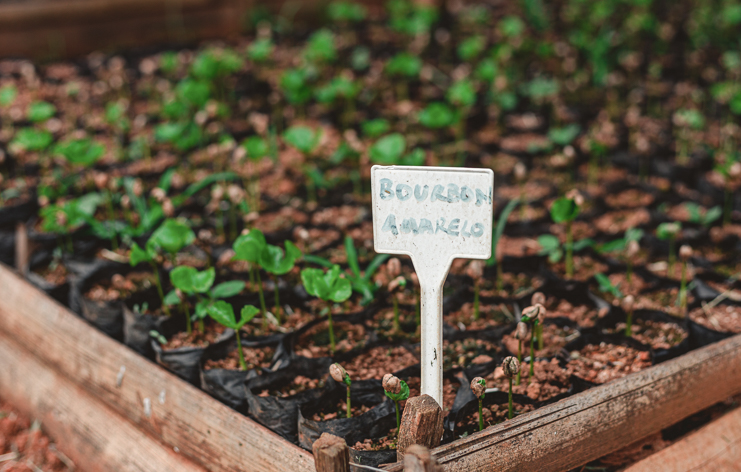Clocks have gone back, Halloween was less sugary than usual, Corona has a vicious second bite and it has turned cold. So what we all feel like is a cuddle of a coffee and this is where the Brazils on the counter really shine. Each year we visit our friends at Carmo Coffee and select our coffees for arrival at around this time of the year. It is always a treat. Carmo de Minas is a beautiful part of Brazil in the Minas Gerais state – north of both São Paulo and Rio de Janeiro. This year of course we did all of our pre-shipment selection at our roastery. We have been visiting and buying from Carmo Coffees for many, many years now. Our interest in the area was piqued from judging in the Cup of Excellence competitions and seeing so many winners come from this region. Their coffees were sweet and nicely balanced and we had to investigate.
Our first shipment from Carmo was a small lot from Fazenda Santa Helena. We appreciated what it did in our Monmouth Espresso, giving the coffee some stability and a foundation for other fruitier coffees to clamber over. On the counter on its own it provided a lovely bookend of a flavour: chocolatey, low acidity, and a tasty toasty finish. Part of this is roast profile but a lot of it is flexibility of the Yellow Bourbon cultivar combined with the pulped natural process. We got hooked early and we have been buying this combination ever since.
Yellow Bourbon is a mutant variety thought to be either a natural variation of Red Bourbon, or derived from a natural hybrid of Yellow Typica (Amarelo de Botucatu) and Red Bourbon. It was discovered in Brazil in the 1930s and quickly became a favourite of farmers at the time for its early ripening and vigour. It has since become an established and noble cultivar and while others have been developed to be more hardy the Yellow Bourbon has become a favourite for flavour potential. The pulped natural process suits it very well; by removing the cherry skin before drying the potentially brash flavours of the natural process are avoided, and without the washing process the bean retains its inherent sweetness and body not becoming overwhelmed by its own acidity. After all of this we are left with a very sweet, chocolate-like coffee with lovely hazelnut or almond notes. Over the years we have flirted with other varieties and processes from Brazil but we always come back to a Yellow Bourbon Pulped Natural.

When we get these coffees to the roaster we like to take them up to a full or dark roast to really bring the cocoa notes to the front of the palate. We do this by taking them through first crackle (when the beans physically expand with a cracking pop) all the way up to almost meet the second crackle before releasing the roast into the cooling tray. This month you’ll find coffee from Fazenda IP and Fazenda Furnas on our counters – they are very much their own coffees but variations on the chocolate-nutty theme.
Visit @carmocoffees on instagram or carmocoffees.com.br online for more information from the farm, their coffees and the Cria Carmo project. Carmo are putting out some great videos talking through the crop and processing and all of the new COVID-19 precautions they have taken. Like all of us, the farmers have made sweeping changes to the way they work.
Many thanks and let’s get to Christmas as safe and well as we can.
Monmouth
